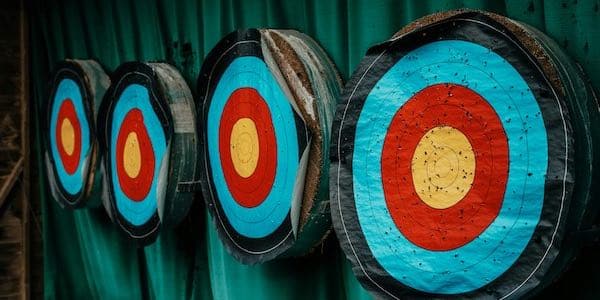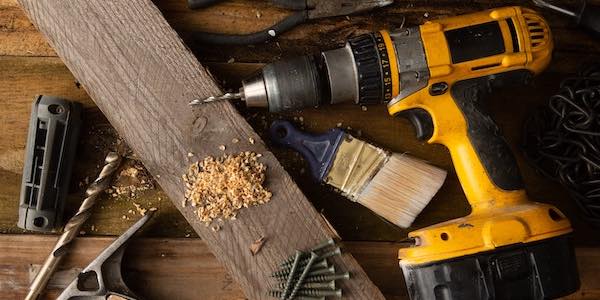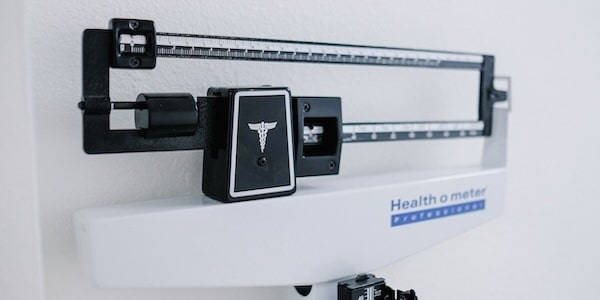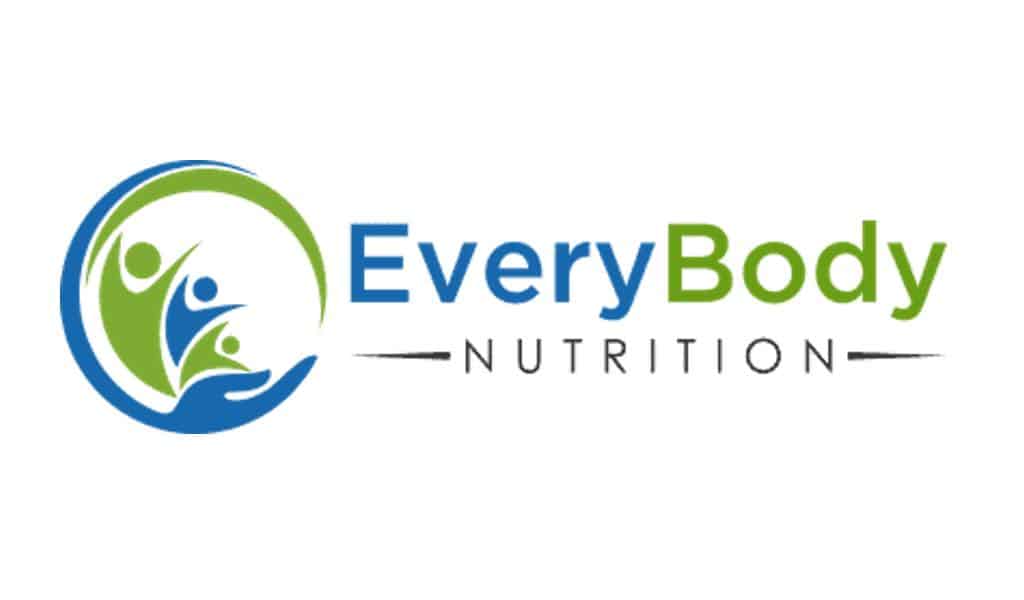Introduction
If you’re over the age of 40, your fitness journey comes with its unique set of challenges and considerations. It’s a transformative period where smart workout choices can make all the difference. In this guide, we’ll explore the three most common workout mistakes individuals over 40 tend to make and provide practical solutions to help you achieve your fitness goals effectively.
Fitness Over 40: Challenges and Solutions
Navigating the Unique Challenges of Working Out in Your 40s
Entering your 40s may trigger changes in your metabolism, muscle mass, and recovery. Hormonal shifts and lifestyle factors can impact fitness progress as well. Recognizing and adapting to these changes is crucial for constructing a workout routine that aligns with your body’s evolving needs. For instance, incorporating more recovery days and prioritizing exercises that promote joint health may become essential strategies to improve your fitness and health longevity.

Tailoring Strategies for Effective Age-Specific Workouts
Tailoring your workout to suit your “age” may involve a strategic and holistic approach. Incorporating flexibility exercises, prioritizing recovery, and adjusting workout intensity may prove optimal for your personal results. Consider implementing practices such as yoga or Pilates to enhance flexibility and balance. Embracing a mindset that considers both your physical as well as your mental well-being, may be optimal for you as you “age”.
Bodyweight Workouts and Weightlifting Essentials
Maximizing Results with Bodyweight Workouts for Men
Bodyweight workouts offer a versatile and joint-friendly option for those over 40. Incorporating exercises like squats, lunges, and push-ups can enhance strength and stability without undue stress on joints. For men in this age group, focusing on bodyweight exercises that target multiple muscle groups simultaneously becomes crucial for a well-rounded fitness routine.
Key Mistakes to Avoid in Weightlifting for Individuals Over 40
While weightlifting remains valuable for fitness over 40, certain mistakes can hinder progress and pose injury risks. Common pitfalls include improper form, excessive weight while neglecting warm-ups and not giving your body ample rest. To optimize weightlifting routines, it’s vital to emphasize proper form, gradually progress in intensity, and prioritize joint-friendly movements.
Gym Knowledge: Steer Clear of Common Pitfalls
Overview of Common Gym Mistakes
Whether you’re a seasoned gym-goer or a newcomer, certain mistakes are universal. Overtraining, inadequate warm-ups, and neglecting recovery are pitfalls that individuals over 40 might unknowingly encounter. Recognizing and addressing these issues is key to sustaining a long-term and effective fitness journey.
Emphasizing Proper Form, Technique, and Debunking Myths About Working Out Over 40
Understanding the importance of proper form and technique becomes increasingly crucial with age. Debunking myths surrounding fitness over 40 is essential for dispelling fears and fostering a positive mindset. Tailored approaches, smart progression, and focusing on injury prevention is key, along with engaging in functional movements that mimic everyday activities to enhance overall functionality.
Best Practices for Fitness Over 40
Importance of Warm-Up, Cool-Down, and Proper Nutrition
A comprehensive fitness approach involves more than just the workout itself. Thorough warm-up and cool-down routines enhance flexibility, reduce the risk of injuries, and aid in recovery. Here are some examples of thorough warm-up and cool-down routines.
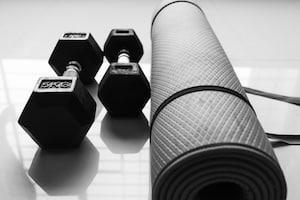
Warm-Up Routine:
Cardiovascular Exercise (5-10 minutes):
- Begin with light cardiovascular exercise to increase blood flow and raise your heart rate gradually. Options include rowing, brisk or incline walking, stationary bike, or Stairmaster.
Joint Mobility Exercises:
- Perform gentle joint mobility exercises to lubricate the joints and improve flexibility. Examples include neck circles, shoulder rolls, wrist circles, hip circles, and ankle rotations.
Bodyweight Activation Exercises:
- Incorporate bodyweight exercises that activate major muscle groups. Squats, lunges, and push-ups with controlled movements help activate muscles and improve stability.
Specific Movement Prep:
- If your workout involves specific movements (e.g., weightlifting or sports), include specific drills to prepare for those activities. For instance, if you’re going to lift weights, perform a progression series of light to heavy sets of the exercises you plan to do.
Cool-Down Routine:
Low-Intensity Cardio (10-20 minutes):
- Gradually decrease the intensity of your workout by engaging in low-intensity cardiovascular exercise.
Static Stretching (7-10 minutes):
- Perform static stretches focusing on major muscle groups. Hold each stretch for 10-20 seconds, emphasizing a gentle stretch without bouncing. Include stretches for the calves, hamstrings, quadriceps, hip flexors, chest, and shoulders.
Foam Rolling or Self-Myofascial Release:
- Use a foam roller to target tight or sore muscles. Slowly roll over different muscle groups, applying gentle pressure to release tension and improve flexibility. Pay special attention to areas that feel tight or overworked.
Deep Breathing and Relaxation:
- Spend a few minutes practicing deep breathing or relaxation techniques. This helps calm the nervous system, reduce stress, and promote a sense of well-being.
Hydration and Nutrition:
- Consume water to rehydrate and consider a post-workout snack or meal rich in protein and carbohydrates to support recovery.
Remember, the key to a thorough warm-up and cool-down is gradual progression and attention to your body’s response. Listen to your body, and modify exercises as needed.
Proper nutrition is equally vital, supporting fitness goals and overall well-being. Emphasizing a balanced diet with adequate protein, carbohydrates and fats, along with vitamins, and minerals is essential for optimal health. Consult with a professional if you need a dietary guidance.
Dispelling Misconceptions About Aging and Fitness
Age should not be a limiting factor in your fitness journey. We’ll dispel common misconceptions surrounding aging and fitness, showcasing inspiring stories and studies that prove it’s never too late to achieve remarkable physical feats. Examples of individuals who started their fitness journey in their 40s or later and achieved significant transformations can serve as powerful motivation.
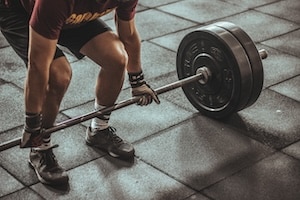
Myth 1: “It’s Too Late to Start Exercising in Your 40s”
Debunked: It’s never too late to start exercising. In fact, starting a fitness journey in your 40s can lead to significant improvements in health, strength, and overall well-being. Regular exercise has been shown to enhance cardiovascular health, boost metabolism, and improve mental clarity, regardless of when you begin.
Myth 2: “Weightlifting is Dangerous for Older Individuals”
Debunked: Weightlifting, when done with proper form and under supervision if needed, is not inherently dangerous for older individuals. In fact, resistance training is crucial for maintaining muscle mass, bone density, and overall strength, which becomes increasingly important with age. Always start with appropriate weights and gradually progress to avoid injury.
Myth 3: “Cardio is the Only Way to Lose Weight After 40”
Debunked: While cardiovascular exercise is beneficial for weight management, it’s not the only solution. Strength training plays a vital role in boosting metabolism, preserving lean muscle mass, and promoting fat loss. A well-rounded fitness routine that includes both cardio and strength training is most effective for achieving weight loss and overall health. All the above while including a healthy nutrition plan can definitely turn back the age clock and let you enjoy many more prosperous years of good health.
Myth 4: “Joint Pain is Inevitable as You Age”
Debunked: Joint pain is not inevitable with age. Regular exercise, especially activities that improve joint flexibility and strength, can help prevent and alleviate joint pain. Low-impact exercises like swimming, yoga, and cycling can be excellent choices for maintaining joint health as well, without putting excessive stress on the joints. Supplementing with collagen and natural anti-inflammatories can also improve joint health and pain.
Myth 5: “You Shouldn’t Push Yourself Too Hard in Your 40s”
Debunked: While it’s important to listen to your body and avoid overtraining, pushing yourself within reasonable limits is crucial for progress. Moderate to high-intensity workouts can help build strength, endurance, and resilience. The key is to balance intensity with adequate recovery and proper form.
Myth 6: “Older Adults Can’t Build Muscle Like Younger Individuals”
Debunked: While it’s true that muscle-building processes may slow down with age, older adults can still build and maintain muscle through resistance training. With the right exercise regimen, proper nutrition, and adequate recovery, individuals over 40 can achieve significant improvements in muscle mass and strength.
Myth 7: “Flexibility Declines and Can’t Be Improved After 40”
Debunked: Flexibility is trainable at any age. Incorporating stretching exercises, yoga, or Pilates into your routine can enhance flexibility and joint range of motion. Improved flexibility not only contributes to better overall movement but may also prevent injuries.
Myth 8: “You Can’t Transform Your Body After 40”
Debunked: Body transformations are possible at any age. While the rate of change may vary, consistent exercise, a balanced diet, and healthy lifestyle choices can lead to significant improvements in body composition, strength, and overall fitness.
Debunking these myths is essential for creating a positive mindset and encouraging individuals over 40 to embrace and enjoy their fitness journey. Age should not be a limiting factor, and with the right approach, individuals can achieve remarkable results and lead active, healthy lives.
Conclusion
Navigating the realm of fitness over 40 requires a mindful and strategic approach. By addressing and avoiding common workout mistakes, embracing age-specific strategies, and incorporating holistic practices, individuals can not only maintain but enhance their fitness levels well into their 40s and beyond. Remember, every fitness journey is unique, and the key lies in adapting and evolving as you progress through different stages of life. The path to optimal health and fitness is a continuous journey, and with the right mindset and practices, individuals over 40 can unlock their full fitness potential. Remember, age is just a number, NOT A MINDSET.
Frequently Asked Questions (FAQs)
What are the unique challenges of working out after 40?
As you enter your 40s, changes in metabolism, muscle mass, and recovery times can impact your fitness routine. Hormonal shifts and lifestyle factors also play a role. To maintain progress, it’s essential to adapt your workout by incorporating more recovery days, focusing on joint health, and adjusting exercise intensity to suit your body’s evolving needs.
How can I tailor my workout routine to my age?
Tailoring your workout involves incorporating flexibility exercises, prioritizing recovery, and adjusting workout intensity. Practices like yoga or Pilates can improve flexibility and balance while also promoting mental well-being. A holistic approach that considers both physical and mental health is key as you age, helping you to maintain a balanced and effective fitness routine.
What are the benefits of bodyweight workouts for individuals over 40?
Bodyweight workouts are versatile and joint-friendly, making them ideal for those over 40. Exercises such as squats, lunges, and push-ups can enhance strength and stability without placing undue stress on your joints. Focusing on exercises that target multiple muscle groups simultaneously can lead to a well-rounded fitness routine that supports overall health.
What mistakes should I avoid when weightlifting after 40?
Common weightlifting mistakes include improper form, using excessive weight, neglecting warm-ups, and not allowing sufficient rest. To optimize your routine and reduce the risk of injury, it’s important to emphasize proper form, gradually increase intensity, and choose joint-friendly movements that align with your current fitness level.
What are the most common gym mistakes for individuals over 40?
Overtraining, inadequate warm-ups, and neglecting recovery are common mistakes that can hinder progress and increase the risk of injury. Addressing these issues by incorporating thorough warm-up routines, prioritizing recovery, and ensuring proper technique can help sustain a long-term and effective fitness journey.
Why is proper form and technique important as I age?
Proper form and technique become increasingly important as you age to prevent injuries and ensure effective workouts. By understanding and applying correct techniques, along with debunking myths about fitness over 40, you can maintain a positive mindset and safely achieve your fitness goals.
What is the importance of warm-up and cool-down routines?
Warm-up and cool-down routines are crucial for enhancing flexibility, reducing injury risk, and aiding in recovery. A comprehensive warm-up involves cardiovascular exercises, joint mobility, and bodyweight activation, while a cool-down includes low-intensity cardio, static stretching, foam rolling, and deep breathing to ensure a safe and effective workout experience.
How does nutrition play a role in fitness over 40?
Proper nutrition is essential for supporting fitness goals and overall well-being. A balanced diet rich in protein, carbohydrates, fats, vitamins, and minerals is crucial for maintaining optimal health. Consulting with a professional for personalized dietary guidance can further enhance the effectiveness of your fitness routine.
Is it too late to start exercising in my 40s?
No, it’s never too late to start exercising. Beginning a fitness journey in your 40s can lead to significant improvements in health, including better cardiovascular health, boosted metabolism, and enhanced mental clarity. Regular exercise offers numerous benefits, regardless of when you start, making it a valuable investment in your long-term well-being.
Can older adults build muscle like younger individuals?
While muscle-building may slow down with age, older adults can still build and maintain muscle through resistance training. With the right exercise regimen, proper nutrition, and adequate recovery, individuals over 40 can achieve significant improvements in muscle mass and strength, contributing to better overall fitness.
Is weightlifting dangerous for individuals over 40?
Weightlifting is not inherently dangerous for older individuals when done with proper form and, if needed, supervision. Resistance training is crucial for maintaining muscle mass, bone density, and overall strength. Starting with appropriate weights and progressing gradually helps avoid injury and supports a safe and effective weightlifting routine.
Can I improve my flexibility after 40?
Yes, flexibility is trainable at any age. Incorporating stretching exercises, yoga, or Pilates into your routine can enhance flexibility and joint range of motion. Improved flexibility contributes to better overall movement and can help prevent injuries, making it an important aspect of fitness over 40.
How can I prevent joint pain as I age?
Regular exercise, particularly activities that improve joint flexibility and strength, can help prevent and alleviate joint pain. Low-impact exercises like swimming, yoga, and cycling are excellent choices for maintaining joint health without placing excessive stress on your joints, allowing you to stay active and pain-free as you age.
Is cardio the only way to lose weight after 40?
While cardio is beneficial for weight management, it’s not the only method. Strength training is equally important, as it helps boost metabolism, preserve lean muscle mass, and promote fat loss. A balanced fitness routine that includes both cardio and strength training is most effective for achieving weight loss and maintaining overall health.
Can I still achieve body transformation after 40?
Absolutely. Body transformations are possible at any age with consistent exercise, a balanced diet, and healthy lifestyle choices. While the rate of change may vary, significant improvements in body composition, strength, and overall fitness are achievable with the right approach, proving that age is not a barrier to achieving your fitness goals.


